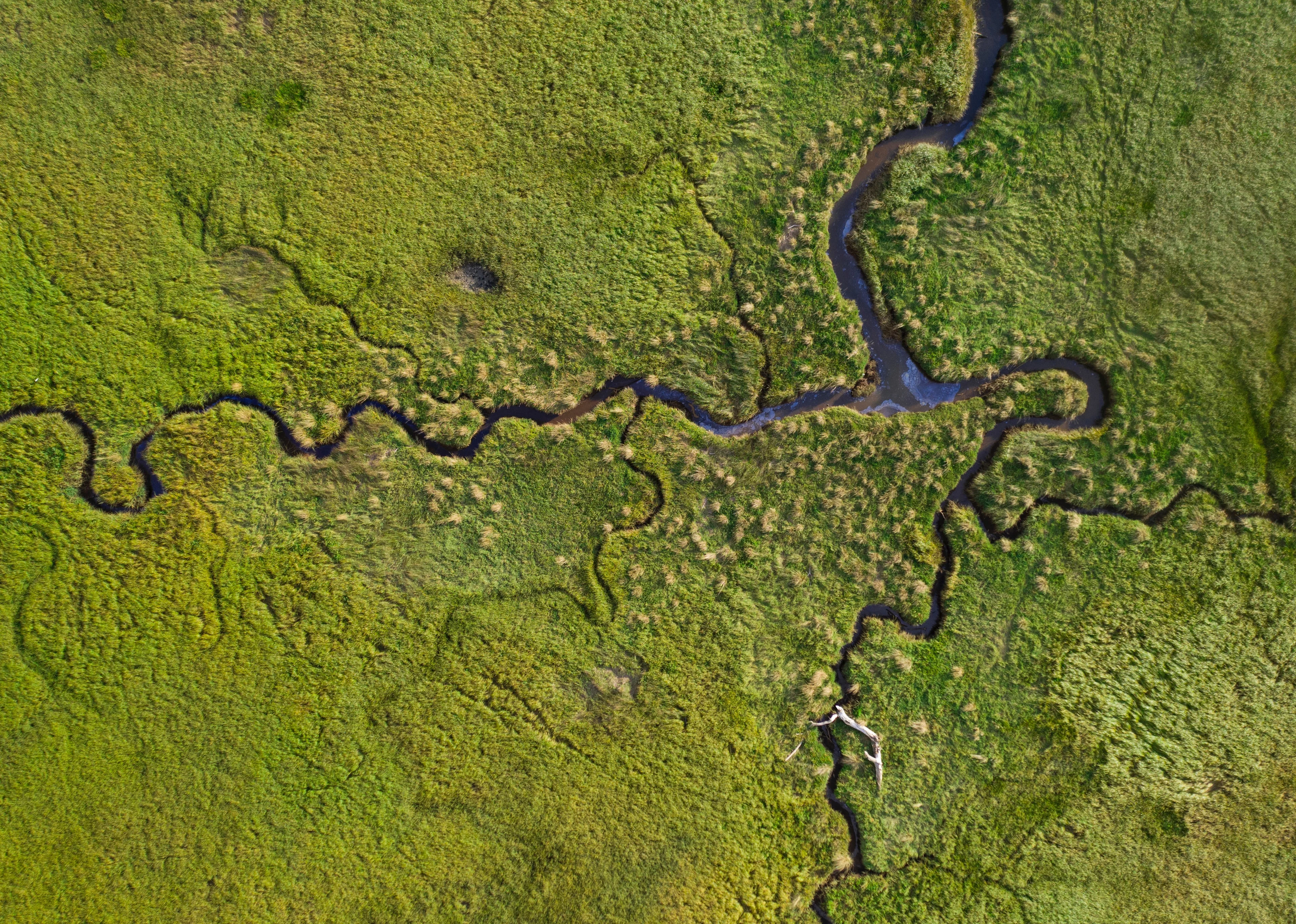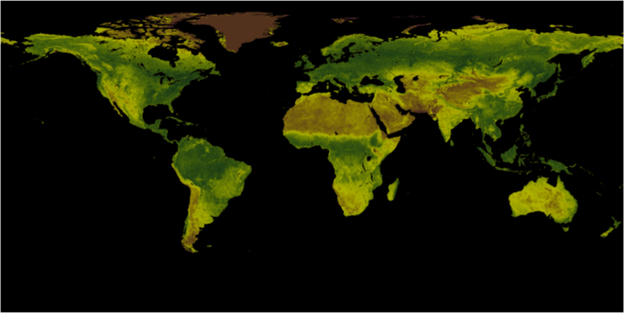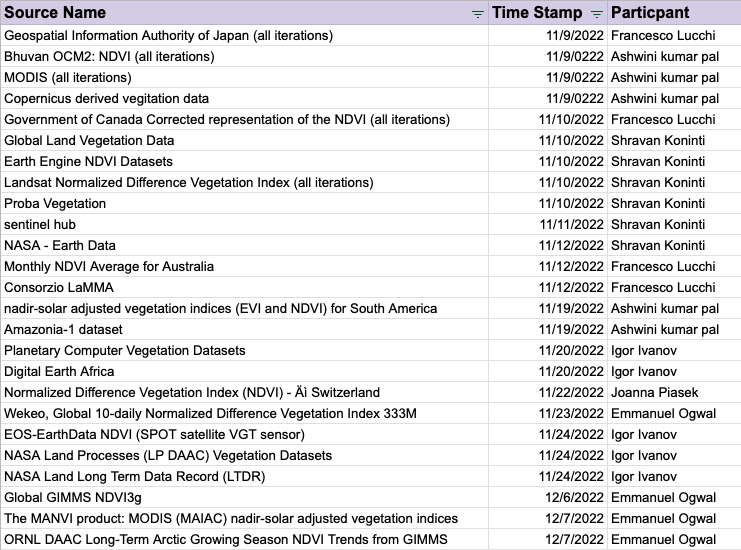
Completed
Finders Seekers - Help Find Data
$500
Launched 138 weeks ago
Completed
The three jobs in this challenge aim to build a data bibliography of interesting satellite and environmental data sources. For this challenge, we seek your help finding unique open-source sources for data. There are three jobs, each with a different theme; you can participate in one or all. Each job has its stated requirements and an example submission to get you started. The more sources you provide, the higher the payout; see the Prize section for details. These three jobs will remain open for a month.
Prizes for these jobs will be a "first submit, first payout" for each unique source. For example, if Judy submits five sources, but Horatio has already submitted two of those sources, Judy will only receive a payout for three sources. We'll publish the identified sources daily on each job page to reduce duplication risk.
Job 1: What are some sources for good quality NDVI satellite data?

Vermote & NOAA CDR Program, 2019
For this job, we are looking for links to websites that host the original source of satellite imagery for Normalized Difference Vegetation Index (NDVI). Here are the criteria for good quality satellite data:
Multiple time points per year, at least two
Image capture post 1998
Data must have a clear open-source license (i.e., Apache 2.0, MIT, BSD)
Submission
A submission file is a CSV file with the following information:
Common Name: Text entry of the common name for the data source.
Web Location of Data: Provide a hyperlink to the data download website page.
Location: Text description of the locations available from the data source.
Data License: Provide a hyperlink to the license website page.
Conditions for Download: Text description of the conditions of use for the downloaded data.
Spatial Resolution: The distance represented by a pixel in the satellite image.
Temporal Resolution: Number of days between capturing two consecutive images of a particular location (i.e., frequency of image capture).
Start Date: Start date of available satellite data (YYYY/MM/DD).
End Date: Most recent date of available satellite data (YYYY/MM/DD).
Data Volume: Text description of the quantity of data, if available.
See the Data Tab on this page to download an example submission file.
Prize
The prize payouts are: $500 for five sources, $300 for four sources, $200 for three sources, $100 for two sources, and $50 for one source. You can receive a maximum of $500 for this job.
Evaluation
You will only be able to submit once per day per job. Every day (12:00 UTC), a Xeek Judge will review all submissions for completeness. If the source fits the criteria, it will be added to a job page with the source name, who identified it, and when. This source register will help reduce duplication risk. At the end of the month, Xeek will reach out to successful participants for a prize payout over all three jobs.
Sources Found 12/8/2022

References
Vermote, Eric; NOAA CDR Program. (2019): NOAA Climate Data Record (CDR) of AVHRR Normalized Difference Vegetation Index (NDVI), Version 5. NOAA National Centers for Environmental Information. https://doi.org/10.7289/V5ZG6QH9. Accessed 2022-09-26.